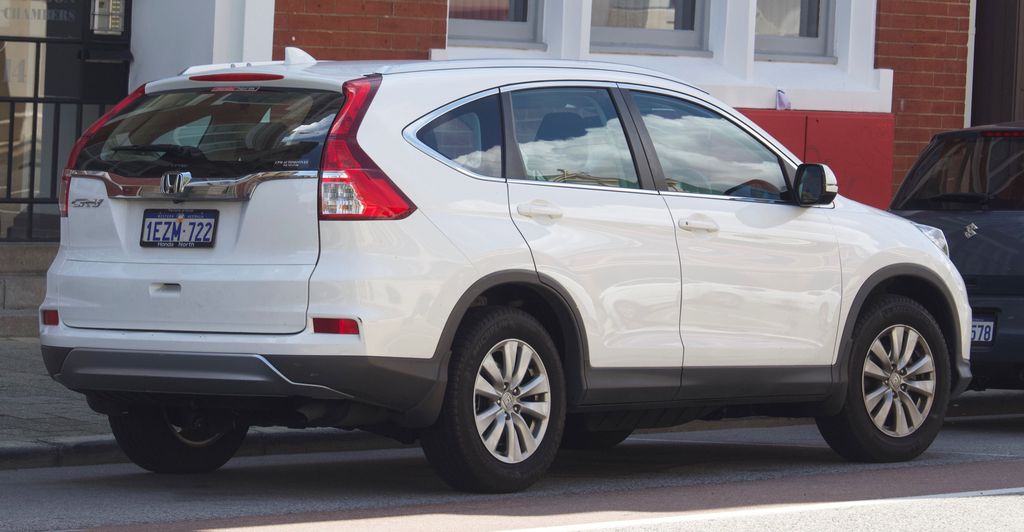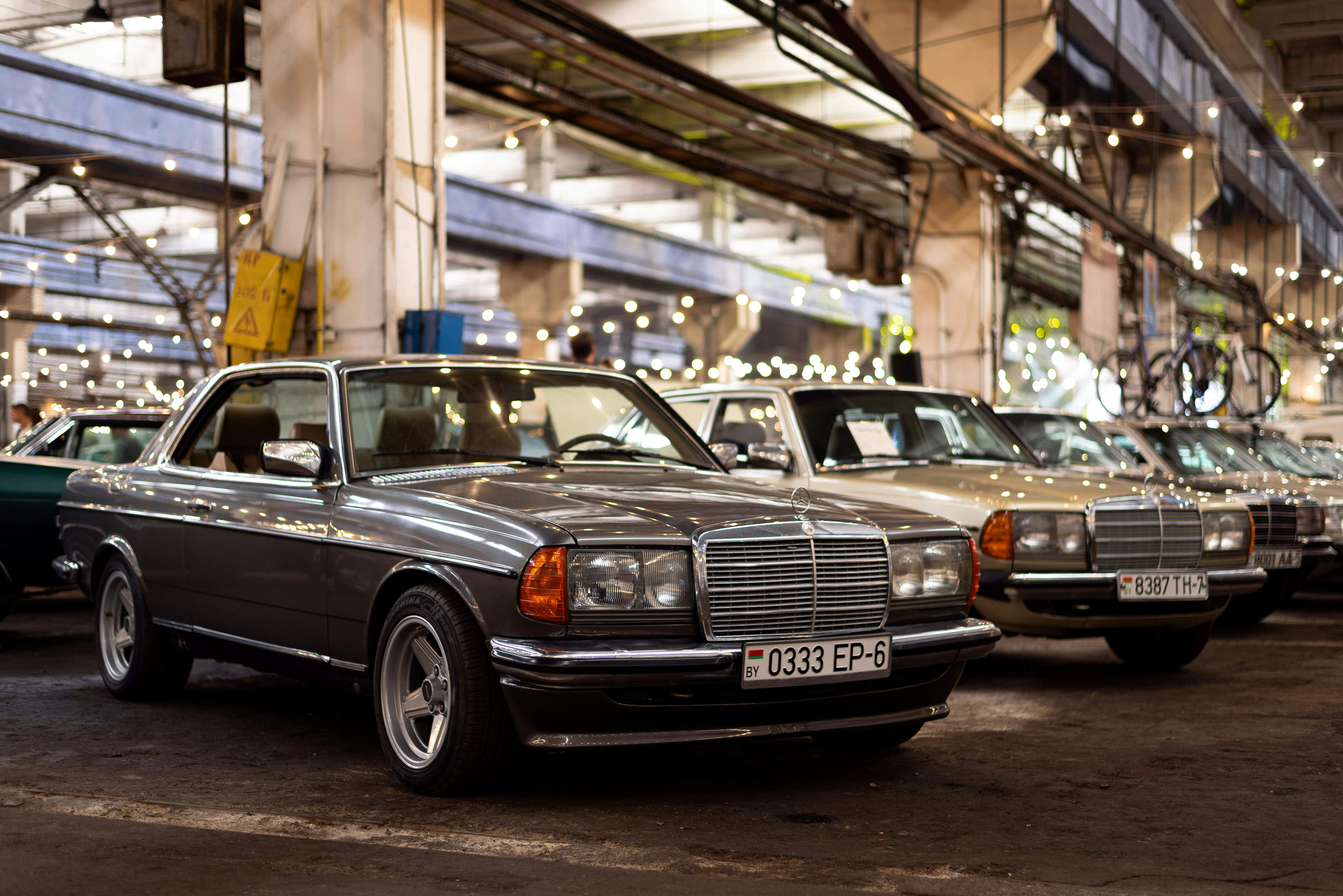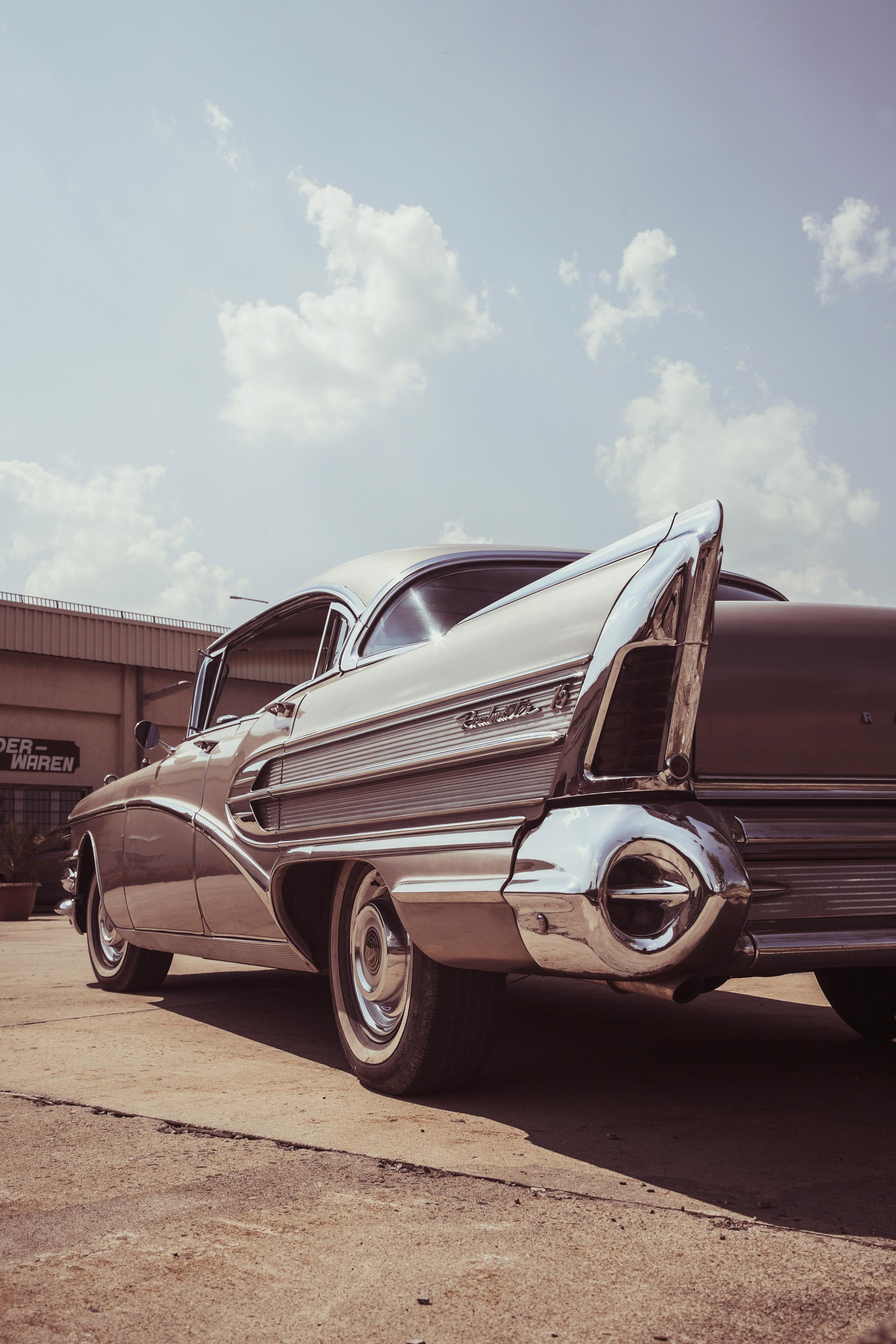
The automotive world is a dynamic tapestry, constantly reweaving its threads to reflect societal shifts, technological advancements, and the ever-evolving tastes of drivers. While certain classic vehicles hold an undeniable nostalgic appeal for those who experienced them in their heyday, the preferences of younger generations — particularly Millennials and Gen Z — paint a starkly different picture. They approach car ownership with a fresh perspective, prioritizing factors that often stand in direct opposition to the design philosophies of yesteryear.
Indeed, the car-buying process itself has undergone a transformation. As Cars.com research indicates, even Gen Z, despite growing up buying things online, still wants to go to a dealership for their first car-buying experience. They rely on the dealer to be a mentor, to do a little hand-holding, showing a unique blend of digital savviness and a desire for personal guidance. However, their ultimate choices are heavily influenced by a demand for efficiency, advanced safety features, connectivity, and practical utility, often leaving the grand, gas-guzzling, or quirky designs of the Baby Boomer era by the wayside.
This generational chasm reveals more than just a shift in aesthetics; it underscores a fundamental divergence in values. While Boomers, who grew up during an era of economic growth and stability, often gravitate towards vehicles that embody reliability and tradition, younger buyers prioritize a blend of sustainability, smart technology, and a driving experience that aligns with urban living and economic realities. Today, we’re taking an in-depth look at some classic vehicles cherished by Baby Boomers that, for various reasons rooted in design, performance, and evolving standards, are simply no longer desired by the generations that follow.
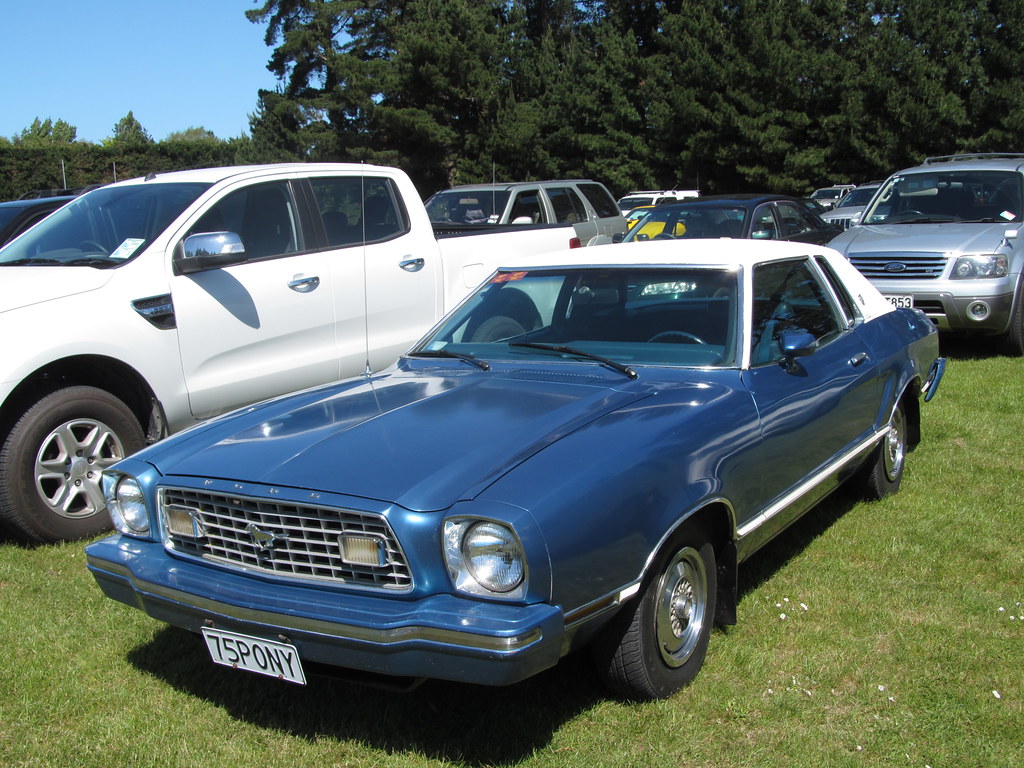
1. **Ford Mustang II**For many Baby Boomers, the Ford Mustang II holds a place in history as a significant attempt to keep the iconic Mustang lineage alive during the turbulent fuel crisis era of the 1970s. It represented a smaller, more fuel-efficient package, a direct response to the market demands of the time. The intention was to retain the Mustang’s essence while adapting to new economic realities, offering a more compact and economical choice to consumers. Its introduction was a bold move by Ford to navigate a challenging automotive landscape.
However, for younger generations, particularly Millennials, the Mustang II often represents a controversial deviation from its revered muscle car heritage. They criticize it for straying too far from its roots, lambasting its underwhelming performance metrics and what they perceive as a bland, uninspired design. The raw power and aggressive styling that defined earlier Mustangs were largely absent, replaced by a more pedestrian aesthetic and less potent powertrains, failing to capture the spirit that made the original so iconic in the eyes of enthusiasts. This contrast highlights a fundamental disagreement on what constitutes a true Mustang.
The Mustang II’s design, while practical for its time, often lacks the visual drama and performance credibility that younger enthusiasts seek in a classic car. Its engineering was more focused on meeting stringent emissions regulations and fuel economy targets than on delivering exhilarating driving dynamics. This practical approach, born of necessity, ultimately led to a vehicle that struggled to resonate with those who admire the Mustang for its high-performance legacy, making it a difficult sell for collectors and drivers who prioritize power and style over historical context.
Car Model Information: 2021 Volkswagen Atlas 2.0T SE
Name: Second generation
Caption: Ford Mustang II coupe
Aka: Ford Mustang II , Ford T5 (in Germany)
Class: Pony car,Subcompact car
Production: 1973–1978
ModelYears: 1974–1978
Predecessor: Ford Mustang (first generation)
Successor: Ford Mustang (third generation)
Assembly: Unbulleted list
Layout: Front-engine, rear-wheel-drive layout
BodyStyle: coupé,hatchback
Related: Ford Pinto,Ford Pinto
Manufacturer: Ford Motor Company
Engine: ubl
Transmission: ubl
Wheelbase: cvt
Length: cvt
Width: cvt
Height: cvt
Designer: Buck Mook, Dick Nesbitt
Categories: All articles with dead external links, All articles with unsourced statements, Articles with dead external links from April 2024, Articles with permanently dead external links, Articles with short description
Summary: The second-generation Ford Mustang, marketed as the Ford Mustang II, is a two- or three-door, four-passenger, front-engine/rear-drive pony car manufactured and marketed by Ford from 1973 until 1978. Introduced in September 1973 for the 1974 model year, the Mustang II arrived roughly coincident with the oil embargo of 1973 and subsequent fuel shortages. Developed under Lee Iacocca, it was an “entirely new kind of pony car.” Ford “decided to call it Mustang II, since it was a new type of pony car designed for an era of high gas prices and fuel shortages.”
The Mustang II was 490 lb (222 kg) lighter and almost 19 in (483 mm) shorter than the 1973 Mustang, and derived from the subcompact Pinto platform. While sharing a limited number of driveline components with the Pinto, the Mustang II employed an exclusive subframe, isolating its front suspension and engine mount subframe. The steering used a rack-and-pinion design.
Named Motor Trend’s 1974 Car of the Year and reaching over 1.1 million sales over four years of production, the Mustang II is noted simultaneously for both its marketing prescience and strong sales – while criticized as having abandoned essential aspects of the Mustang heritage and described, in a retrospective after 40 years since its introduction, as embodying the Malaise era.
Get more information about: Ford Mustang (second generation)
Buying a high-performing used car >>>
Brand: Ford Model: Mustang II
Price: $25,919 Mileage: 49,076 mi.
Read more about: The Thunderous Seven: Classic Muscle Cars That Defined American Automotive Culture
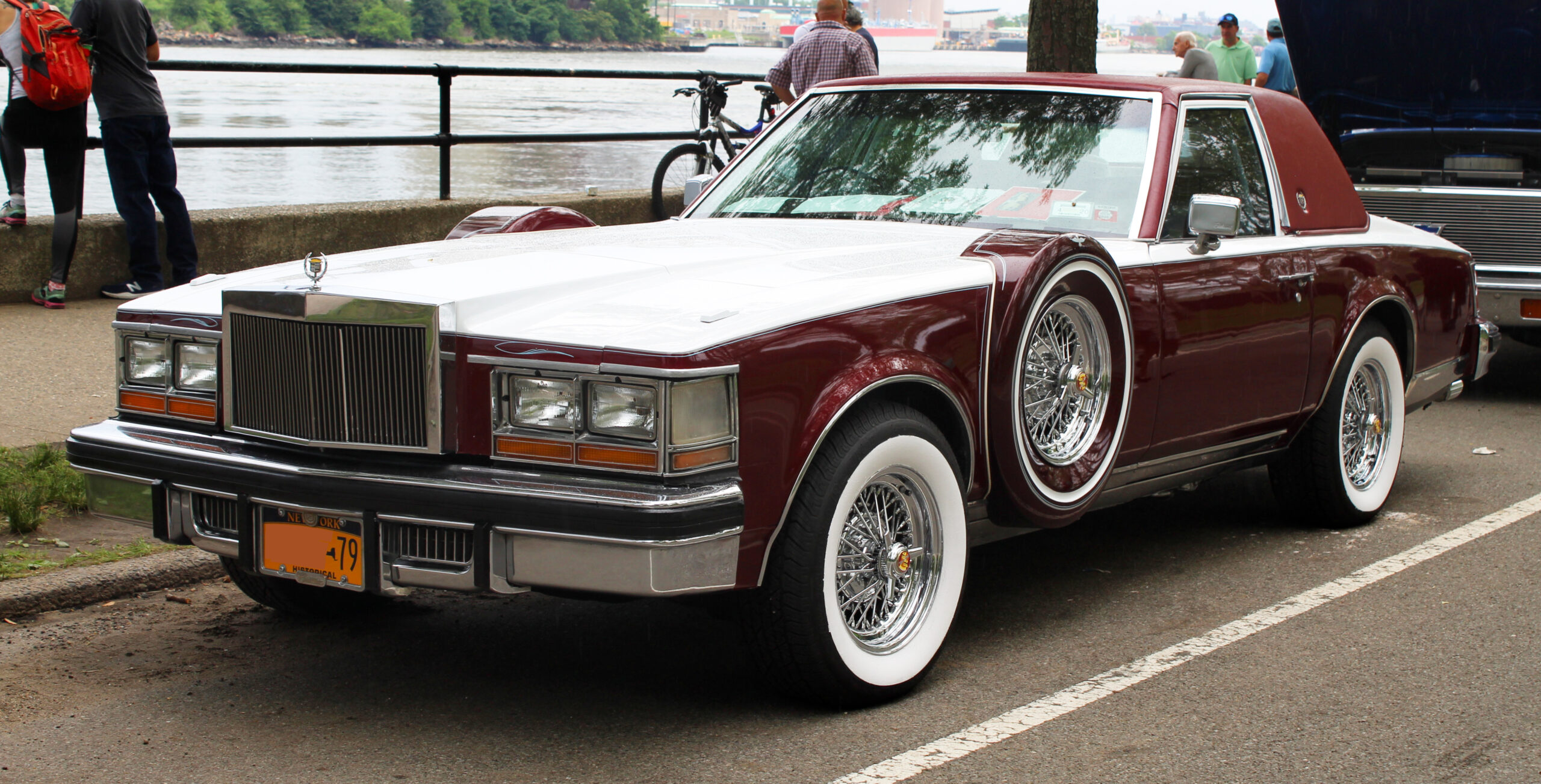
2. **Cadillac Seville**In its prime, the Cadillac Seville was a symbol of American luxury and aspiration, particularly cherished by Baby Boomers. It debuted in the mid-1970s as a more compact, yet still distinctly opulent, Cadillac aimed at a sophisticated, international market. Boomers recall the Cadillac Seville as a premium American sedan that offered comfort and style, embodying a certain refined elegance that was synonymous with the brand during that era. It was seen as a bold move by Cadillac to compete with European luxury imports.
Conversely, Millennials often view the Seville as emblematic of the excesses of past American automotive design, characterized by its large body and significant fuel inefficiency. The sheer scale of these vehicles, even the “compact” Seville compared to its brethren, is a stark contrast to the modern preference for leaner, more environmentally conscious transportation. Its imposing presence and thirst for fuel clash with contemporary values that emphasize sustainability and practicality, especially in urban environments where smaller, more agile vehicles are favored.
This generational shift towards smaller, more economical, and environmentally friendly vehicles fundamentally makes models like the Seville feel outdated. While its interior comfort and plush ride were once hallmarks of luxury, younger drivers often prioritize advanced technology, nimble handling, and efficient powertrains over sheer size and opulent, but ultimately heavy, appointments. The Cadillac Seville, therefore, stands as a monument to a bygone era of automotive luxury that no longer aligns with the desires or practical needs of today’s car buyers.
Car Model Information: 2002 Cadillac Seville Base
Name: Cadillac Seville
Caption: 1998–2004 Cadillac Seville
Manufacturer: Cadillac
Production: 1975–2003
ModelYears: 1976–2004
Class: luxury car
Layout: FR layout
Predecessor: Cadillac Calais
Successor: Cadillac STS
Categories: 1980s cars, 1990s cars, All articles with unsourced statements, Articles with short description, Articles with unsourced statements from October 2016
Summary: The Cadillac Seville is a mid-size luxury car manufactured by Cadillac from the 1976 to 2004 model years as a smaller-sized, premium model. It was replaced by the STS in 2004 for the 2005 model year.
Get more information about: Cadillac Seville
Buying a high-performing used car >>>
Brand: Cadillac Model: Seville
Price: $4,987 Mileage: 104,812 mi.
Read more about: Beyond the Boomer Icons: Why Millennials Are Steering Clear of These Classic Cars and Reshaping the Collector Market
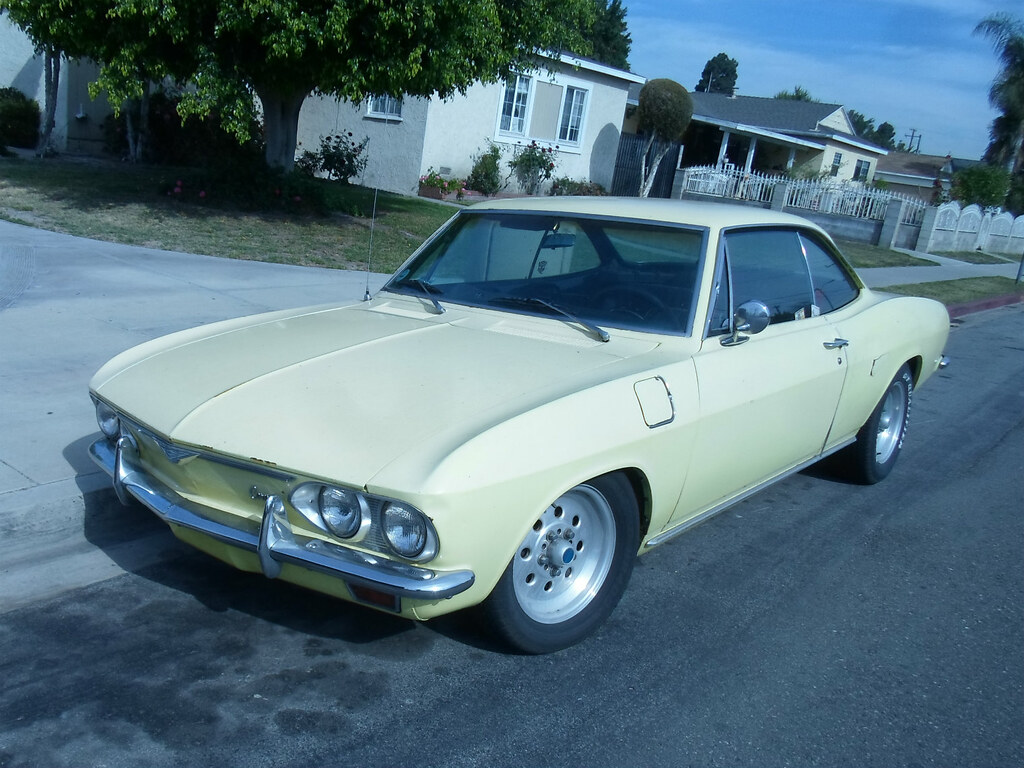
3. **Chevrolet Corvair**The Chevrolet Corvair, introduced in the late 1950s, was a groundbreaking vehicle for its time, especially in the American market. It captivated Baby Boomers with its innovative design, featuring a rear-mounted, air-cooled engine – a configuration more common in European cars like the Porsche and Volkswagen Beetle. This unconventional engineering offered a distinct driving experience and unique styling cues that set it apart from its domestic contemporaries, garnering it a loyal following among those who appreciated its forward-thinking approach.
However, the Corvair’s legacy is often overshadowed by significant controversy, which greatly influences its perception among younger generations. Millennials frequently criticize it for its notorious handling issues and safety concerns, largely fueled by Ralph Nader’s book, ‘Unsafe at Any Speed.’ While later models addressed many of these criticisms, the initial negative publicity created an indelible stain on the Corvair’s reputation. This historical context makes it a less desirable option for younger enthusiasts who prioritize safety and predictable handling above all else in a classic car.
The emphasis on safety and reliable vehicle dynamics in modern automotive culture means that a car with a documented history of handling quirks, whether fully resolved or not, struggles to find acceptance. For a generation accustomed to sophisticated electronic stability control and robust crash-test ratings, the Corvair’s early design challenges represent a significant drawback. Its innovative spirit, while appreciated by some, is overshadowed by a perceived inherent risk that makes it an unlikely choice for contemporary drivers seeking a vintage experience.
Car Model Information: 1964 Chevrolet Corvair Monza
Caption: 1964 Chevrolet Corvair Monza
Name: Chevrolet Corvair
Manufacturer: Chevrolet
Production: 1960–1969
Platform: GM Z platform
Chassis: Unibody
ModelYears: 1960–1969
Assembly: United States,Kansas City, Missouri,Oakland, California,Van Nuys,St. Louis,Flint, Michigan,Belgium,Canada,Mexico,South Africa,Switzerland,Venezuela
Class: Compact car
Successor: Chevrolet Vega
Layout: Rear-engine, rear-wheel-drive layout
Categories: All Wikipedia articles written in American English, All articles lacking in-text citations, All articles needing additional references, All articles with dead external links, All articles with specifically marked weasel-worded phrases
Summary: The Chevrolet Corvair is a rear-engined, air-cooled compact car manufactured and marketed by Chevrolet over two generations between 1960 and 1969. The Corvair was a response to the increasing popularity of small, fuel-efficient automobiles, particularly the imported Volkswagen Beetle and American-built compacts like the Rambler American and Studebaker Lark.
The first generation (1960–1964) was offered as a four-door sedan, two-door coupe, convertible, and four-door station wagon. A two- and four-door hardtop and a convertible were available second-generation (1965–1969) variants. The Corvair platform was also offered as a subseries known as the Corvair 95 (1961–1965), which consisted of a passenger van, commercial van, and pickup truck variant. Total production was approximately 1.8 million vehicles from 1960 until 1969.
The name “Corvair” was first applied in 1954 to a Corvette-based concept with a hardtop fastback-styled roof, part of the Motorama traveling exhibition. When applied to the production models, the “air” part referenced the engine’s cooling system.
A prominent aspect of the Corvair’s legacy derives from controversy surrounding the handling of early models equipped with rear swing axles, articulated aggressively by Ralph Nader’s Unsafe at Any Speed but tempered by a 1972 Texas A&M University safety commission report for the National Highway Traffic Safety Administration (NHTSA) which found that the 1960–1963 Corvair possessed no greater potential for loss of control in extreme situations than contemporary compacts.
To better counter popular inexpensive subcompact competitors, notably the Beetle and Japanese imports such as the Datsun 510, GM replaced the Corvair with the more conventional Chevrolet Vega in 1970.
Get more information about: Chevrolet Corvair
Buying a high-performing used car >>>
Brand: Chevrolet Model: Corvair
Price: $29,988 Mileage: 74,787 mi.
Read more about: Beyond Their Era: 14 Classic Cars That Revolutionized Automotive Design and Engineering, Then Faded From Memory
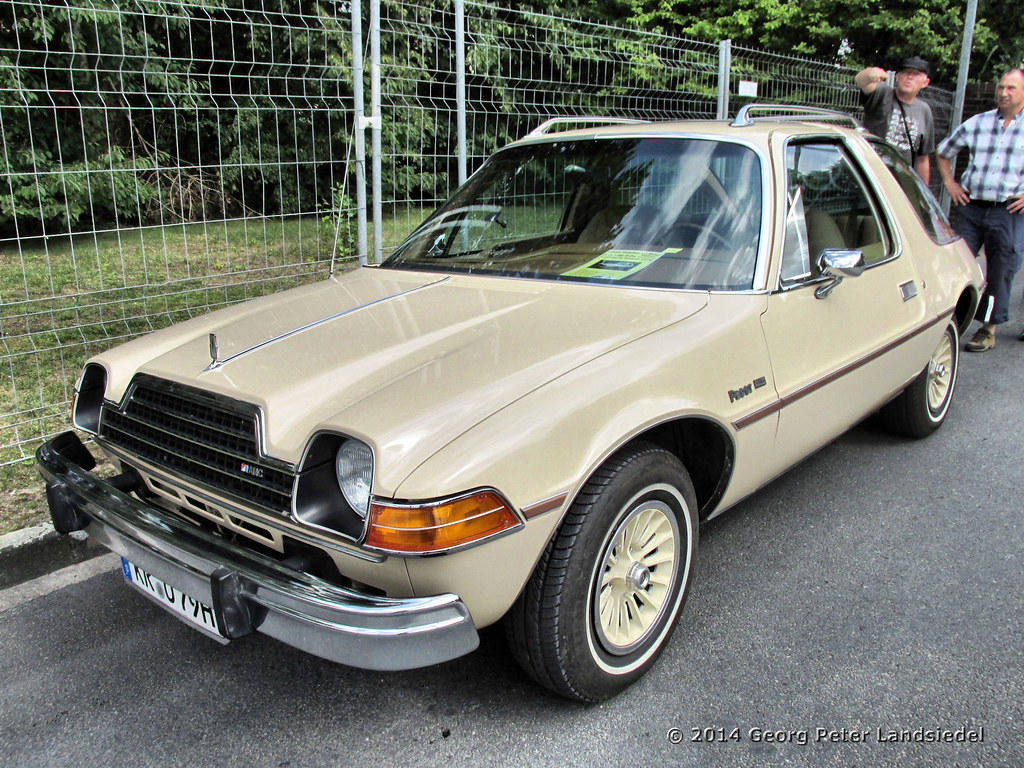
4. **AMC Pacer**The AMC Pacer burst onto the scene in the mid-1970s with a truly distinctive and polarizing design. Touted for its innovation and unique styling, it represented a radical departure from conventional automotive aesthetics. Boomers might recall its wide, bubble-like appearance and expansive glass area as an attempt at a future-forward, compact car that maximized interior space and visibility. It was an ambitious project, striving to break the mold and offer something genuinely different in a market increasingly dominated by more conventional designs.
However, Millennials tend to regard the Pacer with a mix of amusement and outright criticism, often making fun of its bubble-like appearance. They perceive it as oddly shaped and inefficient, viewing its bold attempt at breaking the mold more as a misstep rather than a mark of innovation. Its wide stance, coupled with its relatively short length, gave it an unusual proportion that simply doesn’t resonate with modern aesthetic sensibilities. What was once seen as avant-garde is now often ridiculed for its perceived awkwardness and lack of conventional appeal.
Beyond aesthetics, the Pacer’s perceived inefficiency, both in terms of fuel economy and its utilization of space for its exterior dimensions, further alienates younger buyers. While it aimed to be a compact car, its unique design choices didn’t always translate into practical advantages that appeal to today’s drivers. The Pacer, therefore, exemplifies how a car celebrated for its uniqueness in one era can become an object of derision in another, highlighting the vast shift in design preferences and functional expectations across generations.
Read more about: Beyond the Mainstream: 14 Unforgettable ’70s Classic Cars That Shaped Automotive History for Enthusiasts
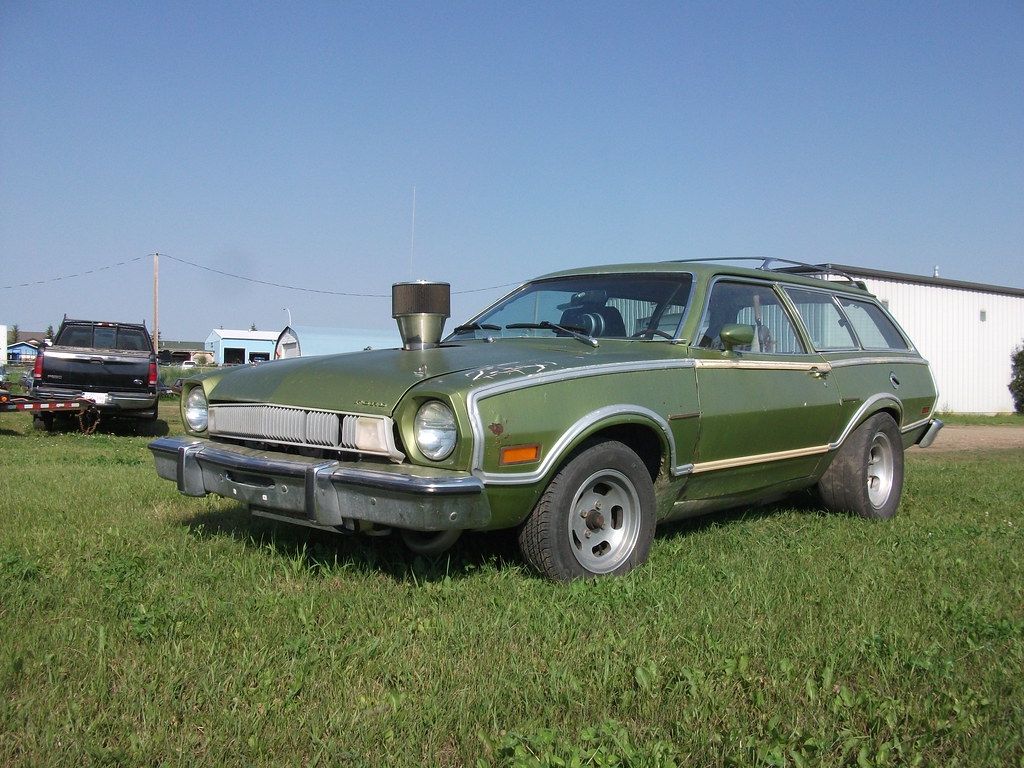
5. **Ford Pinto**During the 1970s, the Ford Pinto found considerable popularity, largely due to its affordability and practicality. For Baby Boomers, it was a ubiquitous sight on American roads, representing an accessible and economical mode of transportation during a period of economic challenges. Many boomers might reminisce about its role as a reliable starter car or a budget-friendly option for families, fulfilling a crucial need in the market for compact and efficient vehicles. Its sales figures were impressive, reflecting its widespread acceptance at the time.
However, the Pinto’s legacy is tragically and inextricably linked to its notorious safety issues, particularly the risk of its fuel tank catching fire upon rear impact. This critical design flaw led to numerous lawsuits, recalls, and a lasting negative perception that deeply impacts how younger generations view the car today. Millennials, having grown up with increasingly stringent safety standards and a heightened awareness of vehicle security, see the Pinto not through a lens of nostalgia, but as inherently dangerous and a stark example of corporate negligence in its design and manufacturing.
This historical context is an insurmountable hurdle for the Pinto’s appeal to modern drivers. The factual information regarding its safety defects means that any nostalgic value it might hold for Boomers is completely overshadowed by its significant and well-documented risks. For a generation that expects robust safety features and engineering integrity as a baseline, the Ford Pinto remains a potent symbol of what can go wrong when profit is prioritized over passenger protection, making it unequivocally undesirable in today’s automotive landscape.
Car Model Information: 1978 Ford Pinto RUNABOUT HATCHBACK
Name: Ford Pinto
Caption: Ford Pinto
Manufacturer: Ford Motor Company
Aka: Mercury Bobcat
Production: September 1970 – July 1980
ModelYears: 1971–1980 (Pinto),1974–1980 (Bobcat)
Assembly: Edison, New Jersey,Milpitas, California
Designer: Robert Eidschun (1968)
Class: Subcompact car
BodyStyle: Sedan (automobile),sedan delivery,station wagon,hatchback
Related: #Mercury Bobcat (1974–1980),Ford Mustang (second generation)
Layout: Front-engine, rear-wheel-drive layout
Chassis: Unibody
Engine: unbulleted list
Abbr: on
Disp: Ford Cologne engine
Transmission: unbulleted list
Wheelbase: 94.0 in
Length: 163 in
Width: 69.4 in
Height: 50 in
Weight: convert
Predecessor: Ford Cortina#Mark II (1966–1970)
Successor: Ford Escort (North America)
Categories: 1980s cars, Articles with short description, Cars discontinued in 1980, Cars introduced in 1970, Commons category link from Wikidata
Summary: The Ford Pinto is a subcompact car that was manufactured and marketed by Ford Motor Company in North America from 1970 until 1980. The Pinto was the first subcompact vehicle produced by Ford in North America.
The Pinto was marketed in three body styles throughout its production: a two-door fastback sedan with a trunk, a three-door hatchback, and a two-door station wagon. Mercury offered rebadged versions of the Pinto as the Mercury Bobcat from 1975 until 1980 (1974–1980 in Canada). Over three million Pintos were produced over its ten-year production run, outproducing the combined totals of its domestic rivals, the Chevrolet Vega and the AMC Gremlin. The Pinto and Mercury Bobcat were produced at Edison Assembly in Edison, New Jersey, St. Thomas Assembly in Southwold, Ontario, and San Jose Assembly in Milpitas, California.
Since the 1970s, the safety reputation of the Pinto has generated controversy. Its fuel-tank design attracted both media and government scrutiny after several deadly fires occurred when the tanks ruptured in rear-end collisions. A subsequent analysis of the overall safety of the Pinto suggested it was comparable to other 1970s subcompact cars. The safety issues surrounding the Pinto and the subsequent response by Ford have been cited widely as business ethics and tort reform case studies.
Get more information about: Ford Pinto
Buying a high-performing used car >>>
Brand: Ford Model: Pinto
Price: $18,995 Mileage: 88,217 mi.
Read more about: The Thunderous Seven: Classic Muscle Cars That Defined American Automotive Culture
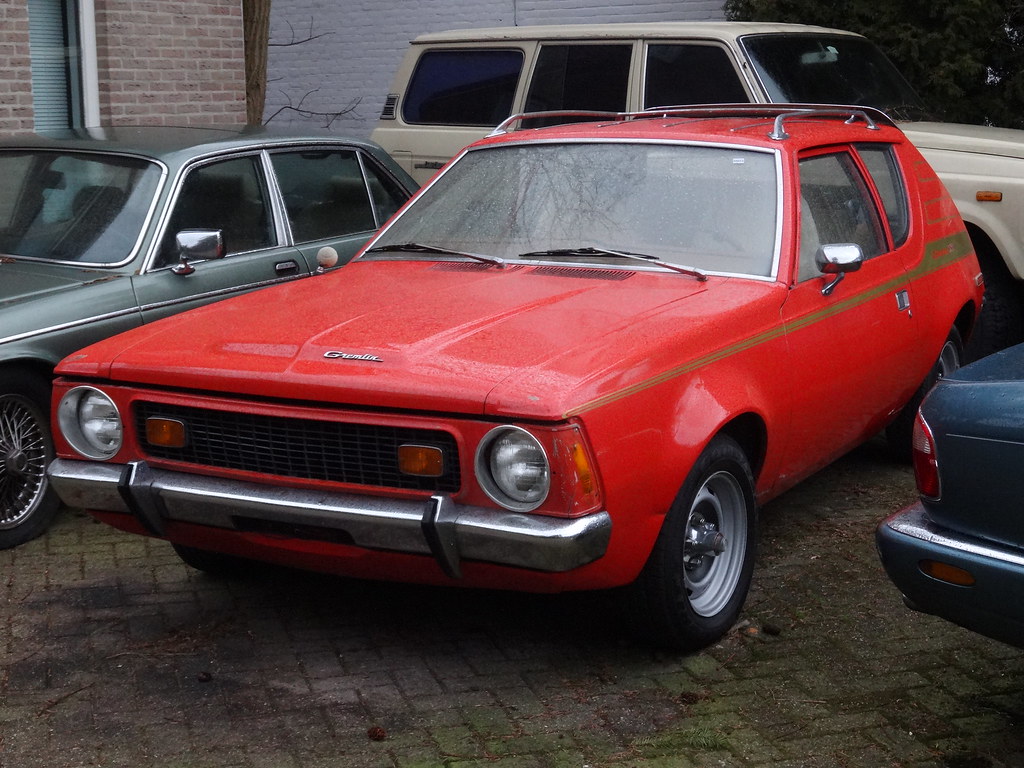
6. **AMC Gremlin**The AMC Gremlin, much like its Pacer stablemate, arrived in the early 1970s with a design that was nothing if not unique. Its distinctive ‘chopped-tail’ aesthetic, famously created by literally cutting off the rear of an AMC Hornet, was a bold statement. For many Baby Boomers, this unique design is viewed with a certain nostalgia, recalling an era when American car manufacturers were willing to experiment with unconventional shapes to capture a specific segment of the market. It was a compact, economical option, aimed at younger buyers of its time who wanted something different.
Yet, for Millennials, the Gremlin’s aesthetics are decidedly less appealing. They tend to dislike the Gremlin for its unusual appearance, often finding its truncated rear and overall proportions jarring and ungraceful. What was once a unique design feature is now often perceived as aesthetically challenging, failing to fit into either the classic beauty of earlier cars or the sleekness of modern vehicles. Its design language simply doesn’t resonate with contemporary tastes, often leading to it being categorized as an automotive oddity rather than a desirable classic.
Beyond its polarizing looks, the Gremlin also suffered from less-than-stellar performance metrics, which further diminish its appeal to younger car enthusiasts. While it was intended as an economical car, its driving dynamics and overall refinement were often criticized, even in its own time. This combination of unusual aesthetics and unremarkable performance makes the AMC Gremlin a car that younger generations largely overlook, preferring vehicles that offer either proven classic styling or more engaging driving experiences, rather than a blend of quirky design and mediocre capability.
The automotive landscape continues its relentless evolution, and as we shift gears into this second segment, our focus turns to a new set of classic vehicles. These are cars once revered by the Baby Boomer generation, but which now face an entirely different kind of scrutiny from younger buyers. This time, the discussion centers predominantly on issues of sheer size, the demand for greater efficiency, and a perceived lack of modern relevance or sophistication that fundamentally disconnects them from today’s market.
Read more about: Buyer’s Guide: 14 Classic Cars That Are More Pitfall Than Pride, According to Seasoned Automotive Experts
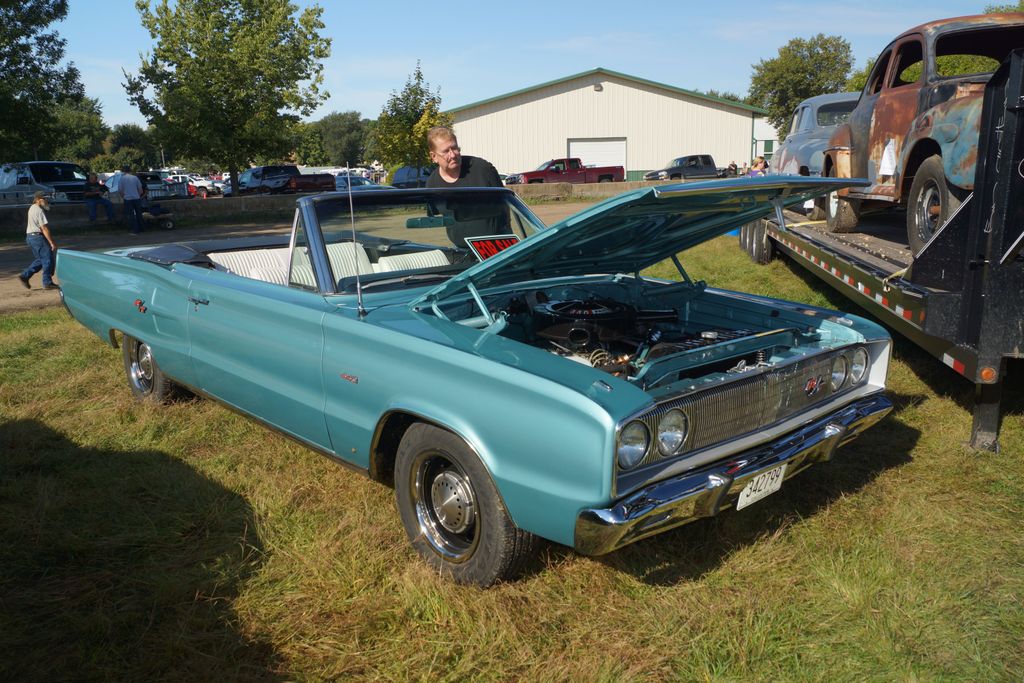
7. **Dodge Coronet**For the Baby Boomer generation, the Dodge Coronet was often remembered as a solid, reliable family car, a dependable workhorse that capably served its purpose. It embodied the practical, no-nonsense approach to vehicle ownership that many Boomers appreciated during an era when cars were primarily utilitarian and built for longevity. Its straightforward design and robust construction offered a sense of security and reliability, making it a common sight in driveways and on family road trips across America. This was a vehicle that got the job done without excessive fanfare, representing a core value for many drivers of its time.
However, younger generations, particularly Millennials, often dismiss the Coronet for what they perceive as its plain design and rather substantial size. In an age where aesthetic appeal and compact efficiency are highly valued, the Coronet’s understated styling and generous footprint appear out of step with contemporary automotive values. It lacks the visual flair or dynamic presence that younger buyers seek in a classic, often feeling more like a relic of an uninspired past rather than a piece of automotive history worth preserving or driving.
The sheer physical dimensions of the Coronet, while offering ample interior space, now present practical challenges that younger buyers are unwilling to accept. Navigating congested urban environments and fitting into increasingly compact parking spaces make a large, traditional sedan like the Coronet cumbersome and impractical. This clashes significantly with the modern preference for vehicles that are agile, easy to maneuver, and efficient in their use of space, reflecting a fundamental shift in what constitutes a desirable and practical daily driver.
Furthermore, its perceived lack of efficiency, both in terms of fuel consumption and material use, contributes to its waning appeal. While Boomers appreciated its solidity, younger generations are more attuned to environmental impacts and running costs. The Coronet, therefore, becomes a symbol of an era when resources seemed limitless and automotive design prioritized presence over economy, making it an unlikely choice for today’s sustainability-conscious consumers who demand more from their vehicles.
Car Model Information: 1967 Dodge Coronet Restomod
Name: Dodge Coronet
Caption: 1967 Dodge Coronet R/T
Manufacturer: Dodge
Production: 1949–1959,1965–1976
Class: Full-size
Predecessor: Dodge Custom
Successor: Dodge Dart
Layout: FR layout
Categories: 1950s cars, 1970s cars, All articles with dead external links, All articles with unsourced statements, Articles with dead external links from June 2016
Summary: The Dodge Coronet is an automobile that was marketed by Dodge in seven generations, and shared nameplates with the same bodyshell with varying levels of equipment installed. Introduced as a full-size car in 1949, it was the division’s highest trim line and moved to the lowest level starting in 1955 through 1959. The name was reintroduced on intermediate-sized models from the 1965 until 1976 model years. Muscle car versions were available starting in 1965 with the 383 and 426 wedge cu in (7.0 L) Chrysler RB engine, followed in 1966 by the powerful 426 cu in (7.0 L) Chrysler Hemi. Other performance models included the “Superbee”, and featured, the 383 cu in (6.3 L) Magnum, among other engine options. The nameplate “coronet” is a type of crown worn by royalty.
In the 1980s, the Coronet was used on Dodge models marketed in Colombia.
Get more information about: Dodge Coronet
Buying a high-performing used car >>>
Brand: Dodge Model: Coronet
Price: $46,500 Mileage: 2,818 mi.
Read more about: The Thunderous Seven: Classic Muscle Cars That Defined American Automotive Culture
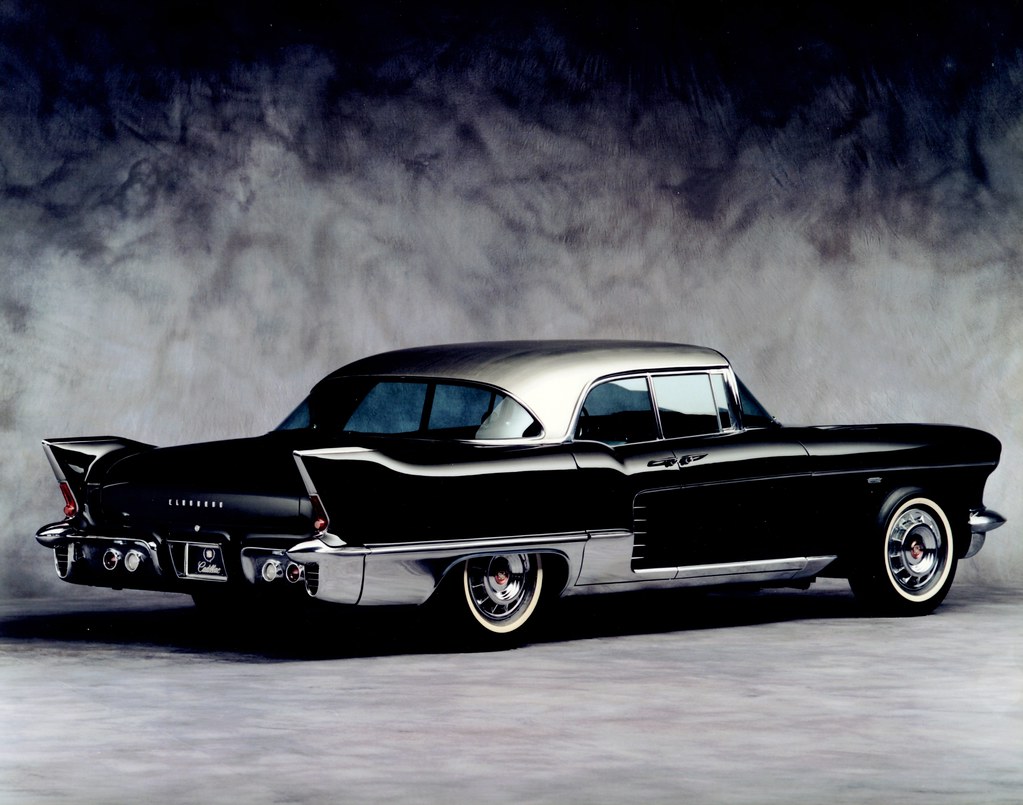
8. **Cadillac Eldorado**In its heyday, the Cadillac Eldorado stood as an undeniable symbol of American luxury and high status, deeply cherished by Baby Boomers for its opulent features and unparalleled comfort. It represented the pinnacle of automotive extravagance, offering a plush, expansive ride that spoke of success and refined taste. Boomers often recall the Eldorado as a vehicle that exuded confidence and provided an experience of uncompromised comfort, with its expansive interiors and smooth, quiet operation making every journey feel like a grand tour.
Yet, this very opulence and scale become points of contention for Millennials, who often criticize the Eldorado for its excessive size and poor fuel efficiency. The sheer mass of these vehicles, while contributing to their majestic presence, clashes sharply with contemporary values of environmental consciousness and practical economy. Younger buyers, facing different economic realities and a heightened awareness of ecological footprints, find such unrestrained consumption difficult to reconcile with their own priorities.
The Eldorado’s prodigious appetite for fuel, a minor consideration in an era of cheaper gasoline, is a significant deterrent today. Modern automotive design emphasizes efficiency, with hybrid and electric powertrains gaining widespread acceptance, making gas-guzzling behemoths like the Eldorado seem profoundly outdated. This shift reflects a broader societal movement towards sustainability, where conspicuous consumption, particularly of fuel, is no longer admired but often seen as irresponsible.
Beyond the environmental impact, the practicality of such a large vehicle in an increasingly urbanized world is also questioned. Maneuverability and ease of parking are paramount for younger drivers, and the Eldorado’s lengthy dimensions make it a cumbersome choice for daily use. What was once a symbol of luxurious freedom now represents a burden of impracticality and inefficiency, pushing it further out of favor with a generation that values agility and smart design.
Car Model Information: 1976 Cadillac Eldorado Convertible
Caption: 1963 Cadillac Eldorado Convertible
Name: Cadillac Eldorado
Manufacturer: Cadillac
Production: 1952–2002
Layout: Front-engine, rear-wheel-drive layout
Aka: Cadillac Fleetwood Eldorado
Class: Personal luxury car
Successor: Cadillac CTS
Categories: 1960s cars, 1970s cars, 1980s cars, 1990s cars, 2000s cars
Summary: The Cadillac Eldorado is a luxury car manufactured and marketed by the Cadillac Motor Car Division of General Motors from 1952 until 2002, over twelve generations.
The Eldorado was at or near the top of the Cadillac product line. The original 1953 Eldorado convertible and the Eldorado Brougham models of 1957–1960 had distinct bodyshells and were the most expensive models offered by Cadillac during those years. The Eldorado was never less than second in price after the Cadillac Series 75 limousine until 1966. Beginning in 1967, the Eldorado retained its premium position in the Cadillac price structure, but was manufactured in high volumes on a unique, two-door personal luxury car platform.
The Eldorado carried the Fleetwood designation from 1965 through 1972, and was seen as a modern revival of the pre-war Cadillac V-12 and Cadillac V-16 roadsters and convertibles.
Get more information about: Cadillac Eldorado
Buying a high-performing used car >>>
Brand: Cadillac Model: Eldorado
Price: $29,499 Mileage: 31,898 mi.
Read more about: Beyond Their Era: 14 Classic Cars That Revolutionized Automotive Design and Engineering, Then Faded From Memory
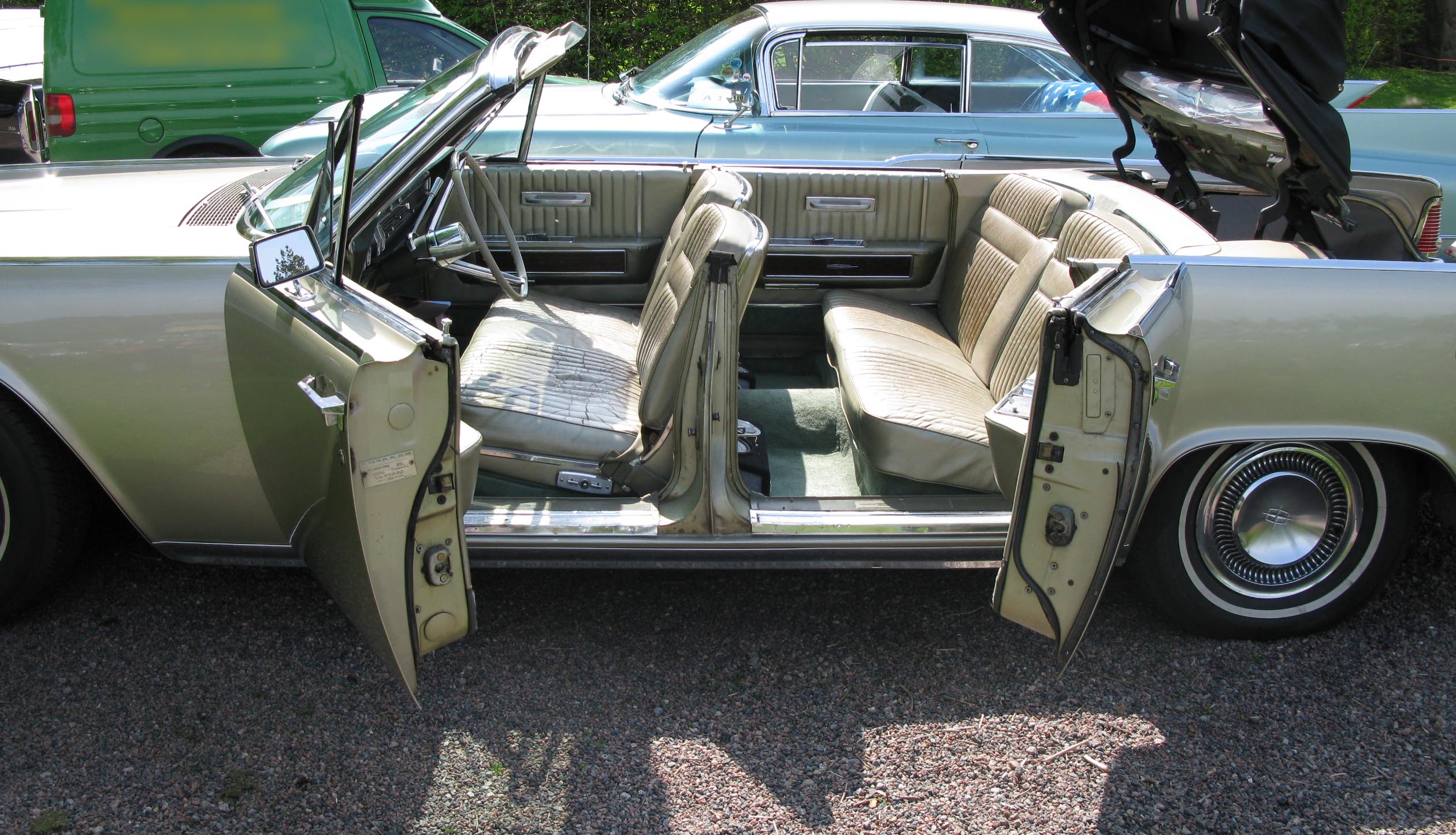
9. **Lincoln Continental with Suicide Doors**The Lincoln Continental, particularly the iconic models featuring “suicide doors” from the 1960s, holds a very special, almost legendary place in the hearts of Baby Boomers. It symbolized ultimate luxury, sophistication, and a distinctive American style, often associated with a golden era of design and engineering. Its unique rear-hinged doors were not just a design flourish but a statement of exclusive elegance, making the car a highly recognizable and revered classic for those who appreciated its grandeur and historical significance.
However, for younger generations, the very aspects that made it iconic for Boomers now contribute to its impracticality. Millennials, approaching car ownership with a different set of priorities, often find its large, impractical design less appealing, viewing it as cumbersome and inefficient in today’s automotive landscape. The sheer physical size of the Continental, while commanding presence, becomes a significant drawback when navigating modern urban environments where space is at a premium and agility is preferred.
The concept of “ultimate luxury” has also evolved dramatically. Where once it meant expansive chrome and imposing dimensions, modern luxury often translates to advanced technology, seamless connectivity, and highly efficient, user-friendly designs. The Continental, despite its historical allure, lacks these contemporary features, making it feel more like a museum piece than a viable or desirable driver for everyday use. Its charm lies in its past, not its present utility.
Furthermore, the design itself, while distinctive, can be seen as less functional in a practical sense. The suicide doors, though visually striking, can present challenges in tight parking spots or for casual use, highlighting a disconnect between historical design ideals and modern ergonomic expectations. This beautiful but undeniably weighty and thirsty machine struggles to compete with the streamlined, eco-conscious, and technology-laden vehicles that define current automotive desirability.
Car Model Information: 2018 Lincoln Continental Reserve
Name: Lincoln Continental
Caption: 2019 Lincoln Continental
Manufacturer: Lincoln Motor Company
Production: 1939–1942,1946–1948,1956–2002,2016–2020
ModelYears: 1940–1942,1946–1948,1958–1980,1982–2002,2017–2020
Class: Full-size car,luxury car
Layout: Longitudinal engine,Front-engine, rear-wheel-drive layout
Categories: 1930s cars, 1940s cars, 1950s cars, 1960s cars, 1970s cars
Summary: The Lincoln Continental is a series of mid-sized and full-sized luxury cars produced between 1939 and 2020 by Lincoln, a division of the American automaker Ford. The model line was introduced following the construction of a personal vehicle for Edsel Ford, who commissioned a coachbuilt 1939 Lincoln-Zephyr convertible, developed as a vacation vehicle to attract potential Lincoln buyers. In what would give the model line its name, the exterior was designed with European “continental” styling elements, including a rear-mounted spare tire.
In production for over 55 years across nine different decades, Lincoln has produced ten generations of the Continental. Within the Lincoln model line, the Continental has served several roles ranging from its flagship to its base-trim sedan. From 1961 to 1976, Lincoln sold the Continental as its exclusive model line. The model line has also gone on hiatus three times. From 1949 to 1955, the nameplate was briefly retired. In 1981, the Continental was renamed the Lincoln Town Car to accommodate the 1982 seventh-generation Continental. After 2002, the Continental was retired, largely replaced by the Lincoln MKS in 2009; in 2017, the tenth-generation Continental replaced the MKS.
As part of its entry into full-scale production, the first-generation Continental was the progenitor of an entirely new automotive segment, the personal luxury car. Following World War II, the segment evolved into coupes and convertibles larger than sports cars and grand touring cars with an emphasis on features, styling, and comfort over performance and handling. From 1956 to 1957, the Continental nameplate was the namesake of the short-lived Continental Division, marketing the 1956–1957 Continental Mark II as the worldwide flagship of Ford Motor Company; as a second successor, Ford introduced the Continental Mark series in 1969, produced over six generations to 1998.
Along with the creation of the personal luxury car segment, the Lincoln Continental marked the zenith of several designs in American automotive history. The Continental is the final American vehicle line with a factory-produced V12 engine (1948), the final four-door convertible (1967), and the final model line to undergo downsizing (for the 1980 model year).
American production of the Continental and MKZ, its only two sedans, ended in 2020 thereby making Lincoln a crossover/SUV-only brand in the US.
Get more information about: Lincoln Continental
Buying a high-performing used car >>>
Brand: Lincoln Model: Continental
Price: $22,523 Mileage: 86,549 mi.
Read more about: The Duke’s Ride: An In-Depth Look at John Wayne’s Beloved Pontiac Station Wagons and Iconic Automotive Collection
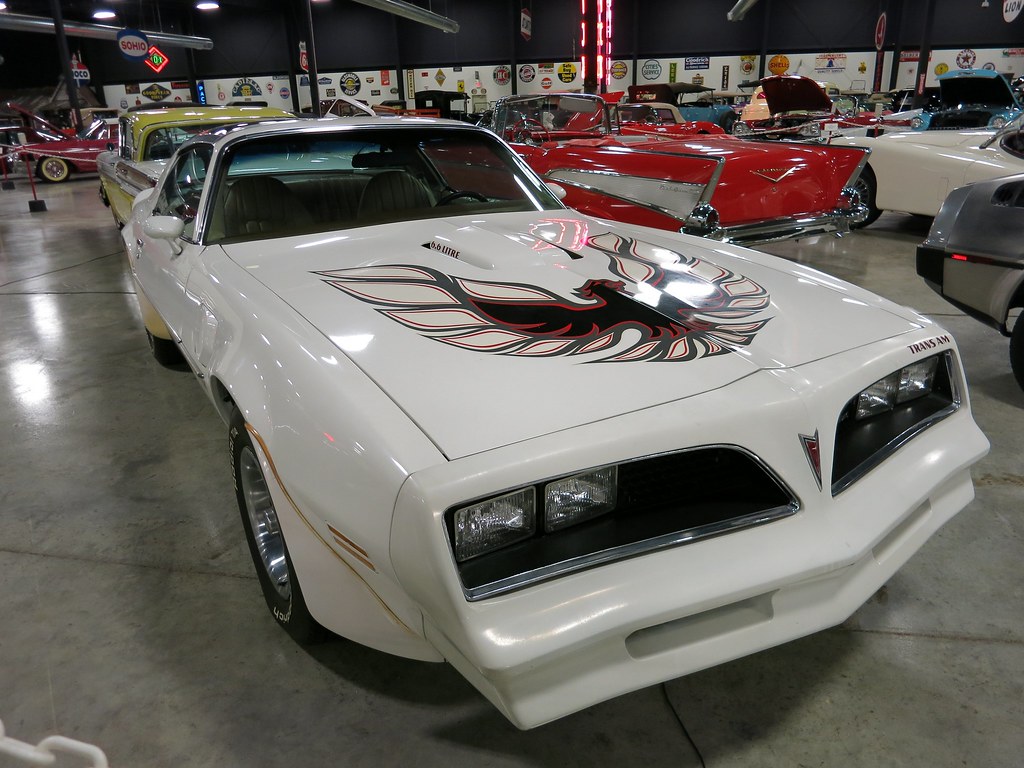
10. **Pontiac Trans Am**Celebrated in numerous films and television shows during the 1970s and 80s, the Pontiac Trans Am solidified its status as an undeniable boomer icon, synonymous with raw performance and unapologetic style. With its distinctive screaming chicken graphic, powerful V8 engines, and often flashy aesthetics, it perfectly captured the spirit of American muscle and rebellion that resonated deeply with the generation coming of age at the time. It was a car that didn’t just move; it made a statement, loud and clear.
Despite its iconic status and cultural impact, younger generations often overlook the Trans Am, primarily due to its perceived lack of sophistication and refinement when compared to contemporary sports cars. While its brute force was once celebrated, modern performance car enthusiasts look for a more balanced package of power, precision handling, advanced aerodynamics, and cutting-edge technology. The Trans Am, for all its muscle, often fell short on the nuanced engineering expected from today’s high-performance vehicles.
The driving experience offered by a classic Trans Am, while thrilling in its own right, often lacks the polished dynamics and technological integration that younger drivers have come to expect. Its heavy steering, sometimes less-than-precise handling, and interior amenities that are now considered rudimentary contrast sharply with the sophisticated, driver-focused cabins and intuitive infotainment systems found in modern sports coupes. This creates a significant gap in what constitutes an engaging and desirable driving machine.
Moreover, the stylistic choices that once defined its audacious appeal can now be seen as overtly aggressive or even gaudy. While Boomers found its bold graphics and scoops exhilarating, younger generations often prefer cleaner lines and a more subtle, yet powerful, aesthetic. This divergence in taste, coupled with the Trans Am’s inherent inefficiencies and less refined mechanics, means it struggles to find a place in the hearts of those accustomed to the sleek, smart, and often more understated powerhouses of today.
Car Model Information: 2023 Honda Civic Sport
Name: Pontiac Firebird
Caption: The second, third, and fourth generations of,the Pontiac Firebird Trans Am
Manufacturer: Pontiac (automobile)
Production: February 23, 1967 – August 30, 2002
ModelYears: 1967 – 2002
Class: Pony car,Muscle car
Platform: GM F platform
Related: Chevrolet Camaro
Layout: Front engine, rear-wheel-drive layout
Categories: 1970s cars, 1980s cars, 1990s cars, 2000s cars, All articles with dead external links
Summary: The Pontiac Firebird is an American automobile built and produced by Pontiac from the 1967 to 2002 model years. Designed as a pony car to compete with the Ford Mustang, it was introduced on February 23, 1967, five months after GM’s Chevrolet division’s platform-sharing Camaro. This also coincided with the release of the 1967 Mercury Cougar, Ford’s upscale, platform-sharing version of the Mustang.
The name “Firebird” was also previously used by GM for the General Motors Firebird series of concept cars in the 1950s.
Get more information about: Pontiac Firebird
Buying a high-performing used car >>>
Brand: Pontiac Model: Trans Am
Price: $23,337 Mileage: 52,128 mi.
Read more about: The Thunderous Seven: Classic Muscle Cars That Defined American Automotive Culture
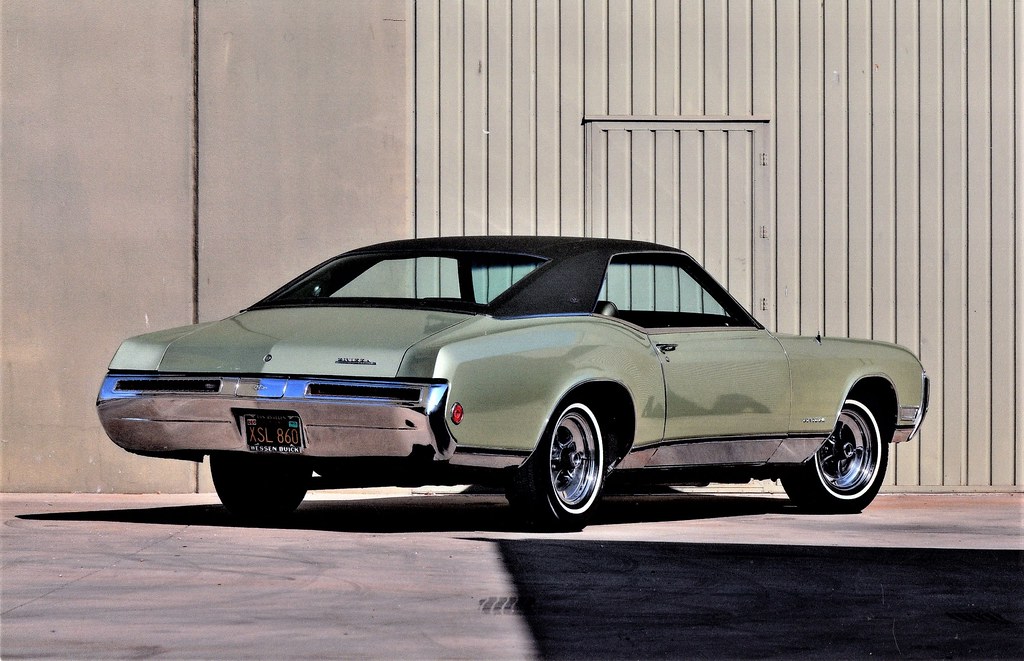
11. **Buick Riviera**The Buick Riviera, particularly models like the distinctive “boat-tail” rear window design, garnered significant admiration from Baby Boomers for its daring design and smooth, comfortable ride. It represented Buick’s venture into personal luxury coupes, blending American comfort with European-inspired styling that set it apart from its contemporaries. Boomers appreciated its unique aesthetic, which was both elegant and bold, providing a sophisticated yet powerful driving experience that spoke to individual taste and a desire for something a little different.
However, for Millennials, the Riviera tends to be viewed as an outdated gas-guzzler with a design that, while once daring, is now often seen as overtly dramatic or even excessive for their tastes. The very boldness that appealed to one generation can appear as an acquired taste—or a misstep—to another, particularly when paired with the practical drawbacks of older automotive engineering. Its generous dimensions and powerful engines, though providing a smooth ride, came at the cost of fuel efficiency.
This issue of fuel consumption is a major point of contention. In today’s climate of environmental awareness and fluctuating fuel prices, the Riviera’s inherent thirst for gasoline makes it an impractical and often unattractive option for younger buyers. They prioritize vehicles that offer economical operation and a lower carbon footprint, rendering the powerful but inefficient engines of yesteryear fundamentally undesirable. The luxury of sheer power has given way to the luxury of efficiency.
Beyond efficiency, the scale and aesthetic of the Riviera can feel out of step with modern design trends. Contemporary vehicles often aim for a balance of form and function, with sleek lines and aerodynamic profiles that are both visually appealing and performant. The Riviera’s pronounced, almost sculptural, design elements, while striking, might not align with the more understated and integrated aesthetics preferred by a generation that values clean, functional design.
Car Model Information: 1971 Buick Riviera
Caption: 1963 Buick Riviera
Name: Buick Riviera
Predecessor: Buick Super
Manufacturer: Buick
ModelYears: 1963–1993,1995–1999
Class: Personal luxury car
Categories: 1960s cars, 1970s cars, 1980s cars, 1990s cars, All articles with specifically marked weasel-worded phrases
Summary: The Buick Riviera is a personal luxury car that was marketed by Buick from 1963 to 1999, with the exception of the 1994 model year.
As General Motors’ first entry into the personal luxury car market segment, the Riviera was highly praised by automotive journalists upon its high-profile debut. It was a ground-up design on a new GM E platform debuting for the 1963 model year and was also Buick’s first unique Riviera model.
Unlike its subsequent GM E platform stablemates, the Oldsmobile Toronado and Cadillac Eldorado, the Riviera was initially a front engine/rear-wheel drive platform, switching to front-wheel drive starting with the 1979 model year.
While the early models stayed close to their original form, eight subsequent generations varied substantially in size and styling. A total of 1,127,261 Rivieras were produced.
The Riviera name was resurrected for two concept cars that were displayed at auto shows in 2007 and in 2013.
Get more information about: Buick Riviera
Buying a high-performing used car >>>
Brand: Buick Model: Riviera
Price: $22,499 Mileage: 91,150 mi.
Read more about: Beyond Their Era: 14 Classic Cars That Revolutionized Automotive Design and Engineering, Then Faded From Memory
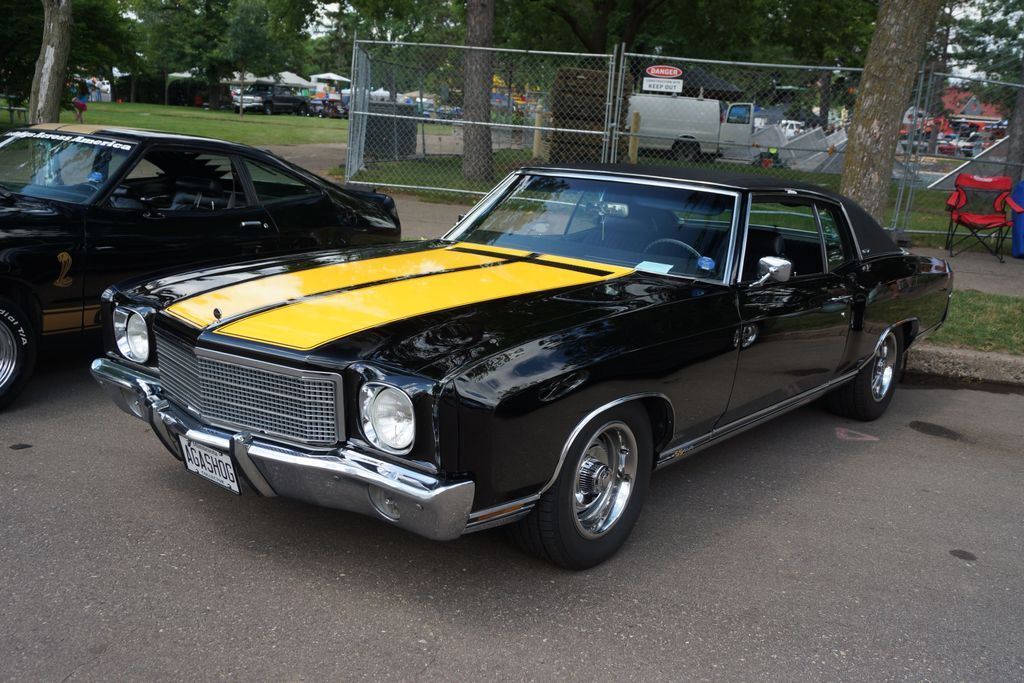
12. **Chevrolet Monte Carlo**For Baby Boomers, the Chevrolet Monte Carlo held a revered place as a stylish, affordable luxury coupe during its heyday, embodying a blend of sporty appeal and comfortable cruising. It offered a distinctive, personal luxury experience that was aspirational yet attainable, with its long hood, sleek lines, and comfortable interiors. Many Boomers remember it fondly for its presence on the road, its role in NASCAR history, and its ability to deliver a sense of prestige without the prohibitive cost of European imports.
However, younger generations often criticize the Monte Carlo for its bulky size and lackluster handling, particularly when compared to the agile and precise dynamics expected from modern performance coupes. What was once considered a comfortable, stable ride can now feel ponderous and unresponsive, failing to meet the contemporary demand for engaging and dynamic driving experiences. Its substantial dimensions make it cumbersome in urban environments and less appealing for those who value nimble performance.
The car’s prominent place in NASCAR history, while a point of pride for many Boomers and racing enthusiasts, does surprisingly little to sway younger generations’ perceptions. For them, a racing heritage alone does not compensate for what they perceive as practical deficiencies in everyday driving. Modern car buyers look beyond historical accolades to assess a vehicle’s current relevance, performance, and usability, areas where the classic Monte Carlo often struggles to impress.
The design philosophy of the Monte Carlo, prioritizing size and a smooth, almost detached ride, clashes with the modern emphasis on driver involvement and efficient packaging. Today’s coupes are engineered to be responsive, offer precise feedback, and maximize interior space within a smaller footprint. The Monte Carlo, therefore, stands as a testament to an era of automotive design that prioritized a different set of values, rendering it largely undesirable for a generation seeking a more integrated and dynamic driving machine.
Car Model Information: 2023 Buick Envision Preferred
Name: Chevrolet Monte Carlo
Manufacturer: Chevrolet
Production: 1969–1987,1994–2007
ModelYears: 1970–1988,1995–2007
Class: Personal luxury car
BodyStyle: coupé
Layout: FR layout
Caption: 2006 Chevrolet Monte Carlo LS
Categories: 1980s cars, 1990s cars, 2000s cars, All Wikipedia articles written in American English, All articles needing additional references
Summary: The Chevrolet Monte Carlo is a two-door coupe that was manufactured and marketed by the Chevrolet division of General Motors. Deriving its name from the city in Monaco, the Monte Carlo was marketed as the first personal luxury car of the Chevrolet brand. Introduced for the 1970 model year, the model line was produced across six generations through the 2007 model year, with a hiatus from 1989 until 1994. The Monte Carlo was a variant of the Pontiac Grand Prix throughout its production.
From 1970 until 1972, the Monte Carlo rode on the unique “A-Special” platform with the Grand Prix, shifting to the standard A-body intermediate chassis from the 1973 through 1977 model years. For 1978, the Monte Carlo line underwent downsizing, but was still considered a midsized coupe. The rear-wheel drive A-body platform of this generation of Monte Carlo was redesignated as the G-body when GM’s front-wheel drive A-body cars were introduced for the 1982 model year. After an abbreviated 1988 model year, the Monte Carlo was replaced by the two-door Chevrolet Lumina.
For the 1995 model year, the Monte Carlo was revived, replacing the two-door Lumina. It shared the front-wheel drive W-platform with the two-door Grand Prix, and was the largest coupe in the Chevrolet lineup. After the 2002 model year, the Grand Prix coupe was discontinued, the Monte Carlo became the largest two-door model produced by an American auto manufacturer.
In response to declining sales of the model line, Chevrolet discontinued the Monte Carlo after the 2007 model year. During much of its production, the Monte Carlo represented the Chevrolet brand in stock car racing. During the 1980s, the Monte Carlo SS was introduced, featuring aerodynamically enhanced styling; as part of its revival, the Monte Carlo again represented Chevrolet in stock car racing from 1995 through its discontinuation.
Get more information about: Chevrolet Monte Carlo
Buying a high-performing used car >>>
Brand: Chevrolet Model: Monte Carlo
Price: $20,221 Mileage: 46,554 mi.
Read more about: Unveiling Automotive Royalty: The Definitive Ranking of 14 Coolest Roadsters by Auction Price for the Ultimate Enthusiast
As we conclude this deep dive into the cars that define a generational divide, it becomes abundantly clear that automotive preferences are far more than just aesthetic choices. They are reflections of economic realities, technological advancements, cultural shifts, and evolving values concerning safety, efficiency, and environmental responsibility. While the iconic vehicles of the Baby Boomer era hold a nostalgic charm for many, their inherent characteristics often conflict with the practical demands and sophisticated expectations of younger buyers. The road ahead for the auto industry will undoubtedly be paved by understanding these distinct generational landscapes, crafting vehicles that resonate not just with history, but with the future of driving itself.

